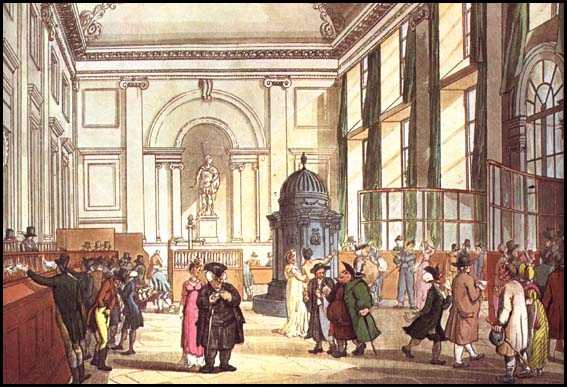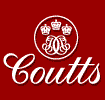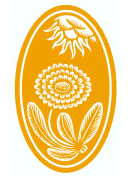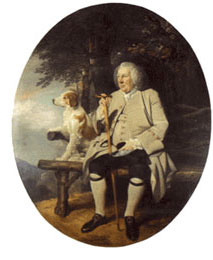Banking in England


Expenses,and Indices

Coin of the Realm
Banking in England | ||
 Expenses,and Indices |  Coin of the Realm |
For a time, the Tower of London was used as a safe repository to store hard currency. This practice ended soon after King Charles I needed money and took (not borrowed) £130,000. Not wanting to suffer repeat occurrence depositers searched for another safe repository. They chose London's goldsmiths with their safes. This process accelerated when Charles II closed the Exchequer in 1672. These Seventeenth-century English goldsmiths developed the model for contemporary banking. Gold stored with these artisans for safekeeping was expected to be kept on hand and returned to the owners on demand. The goldsmiths kept close accounts of the gold on hand and soon noticed that the amount of gold actually removed by all of the owners was only a fraction of the total stored. They soon began to lend other peoples gold, instead of their own. Now they held a promissory note for payment of the principal and interest. In time, paper certificates redeemable in gold coin were circulated instead of gold. This method, now called fractional reserve banking, is the way that all modern banks operate.
One of these successful goldsmiths was Richard Hoare, proprietor at the Golden Bottle founded in 1673 at Cheapside. In 1690 he moved the business to new premises in Fleet Street, still within the City of London. He continued trading at the sign of the Golden Bottle (a gilded leather bottle that hung outside the shop). His son Henry improved the family fortune and purchased an estate with proceeds from sale of South Sea Company stock. He replaced the manor and collected paintings. The resulting banking concern, Hoare and Company still exists in London. One of the earliest check in existence, as follows, was written on this bank on July 11th, 1676.
Mr. Hoare,
Pray pay to the bearer hereof Mr. Witt Morgan fifty-four
pounds ten shillings and ten pence and take his receipt for the
same. Your loving friend,
Will Hale
For Mr Richard Hoare
at the Golden Bottle in Cheapside.
As a result of their success, the Hoare family became very influential, purchased and built a large estate and joined the landed gentry. The third generation, Henry Hoare II improved the Stourhead estate with a luxuriant, Grecian, grand garden around a created lake as well as adding to the house.
The total value of these banknotes in circulation exceeded the value of the gold that was exchangeable for the notes. This caused difficulties for the goldsmiths and their "depositors " when they loaned Charles II large sums that were not repaid. This time it was the goldsmith bankers that suffered. The next step in the evolution of banking reduced the "hit " a banker suffered by forming banking corporations. Among the first banks to operate on this principle were the Bank of England, started in 1694, and the Bank of Scotland started in 1695.
The Bank of England's history started in 1694. King William III needed funds to finance the war against France. The king asked a wealthy English merchant by the name of William Patterson to underwrite its cost. Patterson saw an opportunity to profit from the situation and enlisted friends to help him set up a privately owned bank. As part of a deal with King William, Patterson and his associates were permitted to charter an exclusive, joint-stock bank with limited liability to be called "The Bank of England. "
Established by Act of Parliament and operating under a Royal Charter the Bank of England opened for business on 27th July 1694 with a staff of nineteen in rented premises. The bank was authorized to issue its own bank notes as legal tender. The crucial feature that made Bank of England notes a means of exchange was the promise to pay the bearer the sum of the note on demand. This meant that the note could be redeemed at the Bank for gold or coinage by anyone presenting it for payment. These notes were handwritten on Bank paper and signed by one of the Bank's cashiers. They were made out for the precise sum deposited in pounds, shillings and pence. During the 18th century there was a gradual move toward fixed denomination notes which by 1745 were being part printed in denominations ranging from £20 to £1,000. By part printed it is meant that the text and denomination were printed, lacking only the name of the holder of the note, and the signature of the cashier.
In 1734 the Bank moved to a building in Threadneedle Street in the City of London. From its very beginning the bank issued notes for deposits made with it and these were the forerunners of today's bank notes. It also acted as banker to Government and most departments of state as well as managing and acting as registrar of government securities. The expansion of the Bank's business in the early 18th century necessitated extending the 1734 building until by 1828 it covered the whole of the present three acre site on Threadneedle Street.
The Banks partial printed notes were on white paper, measuring 7-8 inches by 4-5 inches. Following is a grid of the dates for first issuance of each note denomination.
| Bank of England standard denomination introduction | ||
|---|---|---|
| First issue date | Value | Last issued |
| 1725 | £100 | 1943 |
| 1725 | £50 | 1943 |
| 1725 | £40 | 1943 |
| 1725 | £30 | 1852 |
| 1725 | £20 | 1943 |
| ca. 1730 | £1,000 | 1943 |
| ca. 1730 | £500 | 1943 |
| ca 1730 | £400 | by 1803 |
| ca.1730 | £300 | 1885 |
| ca. 1730 | £200 | 1928 |
| ca. 1730 | £90 | by 1803 |
| ca 1730 | £80 | by 1803 |
| ca. 1730 | £70 | by 1803 |
| ca. 1730 | £60 | by 1803 |
| 1759 | £15 | 1822 |
| 1759 | £10 | 1943 |
| 1765 | £25 | 1822 |
| 1793 | £5 | 1957 |
| 1797, March 2 | £2 | 1821 |
| 1797 March 2 | £1 | 1826 |
The smaller denominations were the results of gold shortages. The £10 in 1759 during shortages due to the 7-years war, and the £5 du to the shortages during the wars with revolutionary France. The £2 and £1 were issued after a series of runs caused by public uncertainty over the wars depleted the gold reserves. The Bank was prohibited by act of parliament from paying its notes in gold. This allowed the government to issue more notes not tied to the gold reserves which were used to pay the debts the increased expenditures of the wars required. If this sounds like a recipe for inflation you are correct. This "Restriction Period ", as it became known, lasted until 1821.
It is interesting that it was the advent of the smaller denominations of notes which allowed counterfeiters to succeed. These denominations meant that people were handling paper money instead of coins for the first time. They had no experience to determine the difference between genuine and counterfeit notes. In 1801 the Bank of England introduced a wavy watermark to help in the identification, the passing of counterfeit notes was a capital offence and this was enforced, sometimes resulting in the hanging of the ignorant as well as the guilty.
The Country Bankers' Act of 1826 restricted the Bank's monopoly of joint-stock banking to within 65 miles of London and allowed joint-stock banks to set up outside that limit and issue their own notes. The Act also allowed the Bank to open branches anywhere in England.
The following is a list of The Bank of England's head cashiers and the years they served:

Barclay's began as goldsmiths, John Freame and his partner Thomas Gould in Lombard Street, London, in 1690. The name Barclay became associated with the company in 1736, when James Barclay a Quaker, married John Freame's daughter and became a partner. At approximately this time they began to print and sign their banknotes instead of writting them entirely by hand. It is interesting that the logo, which is still used today, came with new premises purchased in 1728. The sign left by previous tenants remained and became permanently associated with Barclay's Bank.

The business that became Coutts & Company Bank was founded in 1692 by John Campbell as an adjunct to his goldsmithing business, serving Scotland's aristocracy under the first 'sign of the three crowns'. Following Campbell's death in 1712, several family members steered the thriving business through a boom period and the financial chaos of 1720 into new premises at 59 Strand, in the West End, close to the influential aristocracy, politicians and officeholders of Westminster
James Coutts, a Scottish banker, married Campbell's granddaughter in 1755. Six years later, as the widowed solitary partner, he took his brother Thomas in to the business. Thomas is widely credited with laying down the core business practices which brought the company success and made Coutts a rich man. Thomas successfully nurtured enduring relationships with the rich and powerful including William Pitt, the Duke of Wellington, Sir Joshua Reynolds and even King George III.
Thomas Coutts and his first wife had three daughters who all married leading figures in British society, the Earl of Guildford, the Marquis of Bute, and Sir Francis Burdett, who took the name Burdett-Coutts along with Sophia, the youngest, and a £25,000 dowry. Thomas Coutts second wife Harriot, a former actress, inherited his fortune and passed the entire fortune of some £900,000 to Sophia's daughter Angela by the mid-1820s. Angela became a celebrated philanthropist, giving primarily to reform causes.
Coutts and Company is still a successful firm, though they are now a merged division of a larger entity since the last half of the 20th century.

Child & Co c.1580s - date
This private bank traces its origins to the sixteenth century London goldsmith's shop of the Wheeler family. After William Wheeler's death in 1661 his widow married another goldsmith, Robert Blanchard. Their two shops merged under the sign of the Marygold in Fleet Street. Soon the firm's banking outshone its goldsmithing business. Blanchard was joined in partnership at this time by Francis Child. In 1673 Blanchard & Child moved to the bank's present site at 1 Fleet Street, then adjoining Temple Bar (a gateway marking the western limit of the City of London) Child married Blanchard’s stepdaughter and in 1681 inherited the entire business, later becoming Lord Mayor of London.
Francis Child's grandson, Robert, had no male issue and the Child fortune was eventually settled on his granddaughter, Sarah Sophia Fane, who married the fifth Earl of Jersey. Lady Jersey had an income of £40,000, and had some London fame as one of the patronesses of Almack's assembly rooms. Sarah was to act as senior partner of the bank for sixty-one years.
Child &Co remained a relatively small bank through the nineteenth century surviving because of its location in the west end and due to the interest of the aristocracy, politicians and officeholders of Westminster In 1924 Child's and Co. was sold to Glyn, Mills &Co, bankers of London, which was in turn acquired by The Royal Bank of Scotland in 1939. Child &Co has since continued to trade under its own name as an office of the Royal Bank and recently re-established its private banking traditions under the old Marygold trade sign.
 Andrew Drummond
Andrew Drummond
By 1712 Andrew Drummond was trading as a goldsmith at the sign of the Golden Eagle on the east side of Charing Cross, a residential area favoured by the Scottish gentry in London.
In 1717 he also developed a banking business which soon overshadowed his goldsmithing activities. Scots and army agents predominated amongst his early customers, but by 1744 he had over 400 accounts in his ledgers and his diverse clientele included English as well as Scottish aristocrats, men of the arts, such as James Gibbs and Alexander Pope, hospitals and religious and charitable institutions. The firm grew quickly and in 1760 moved to a commissioned building on the bank's present site on the west side of Charing Cross. Andrew Drummond died in 1769 and a series of subsequent partnership agreements divided the business among three branches of the Drummond family.
The bank proved highly successful during the last quarter of the eighteenth century, numbering many important architects, artists, composers and craftsmen amongst its banking customers. These included Robert and James Adam, Sir William Chambers, John Zoffany, Lancelot 'Capability' Brown, Josiah Wedgwood and Thomas Gainsborough. In addition two of the partners were involved in substantial Treasury contracts for the payment of British troops in Canada and America before and during the American War of Independence The firm also kept accounts for King George III and other members of the royal family. By 1815 Messrs Drummond had over 3,500 accounts. In 1824 customer deposits exceeded £2 million.
Drummonds remained successful enough to be one of the four private London banks to survive into the 20th Century.
Sampson Lloyd was a Quaker who had a fortune from family iron foundaries, his and his wife's family. The trade prospered through the seven years war from 1756 thru 1763. As business slowed after the war he began discussions with John Taylor about other opportunities. John Taylor made his fortune manufacturing buttons and japanned goods. Together with Sampson's son they founded, in 1756, the business that is still called Lloyds Bank
The main aim of the Taylor & Lloyds bank was to provide credit to small manufacturers in the Birmingham area. The bank was a great success and in the first six years of trading produced a profit of more than £10,000. Taylor &Lloyds also invested new ventures such as the Birmingham Canal Navigation Company.

Central banking facilities subsequently spread throughout Europe under the aegis of Meyer Amschel Rothschild and his five sons, especially the 3rd son Nathan Mayer Rothschild. Nathan came to London early in the 19th Century to open the bank that became N.M. Rothschild &Sons. Nathan Mayer acquired the premises at New Court on St Swithin's Lane in 1809 which remain the headquarters of N M Rothschild &Sons today
 Back to Top |
 Back to Front Door |
History Ring |
 Site Map |
İD. W. This site last updated March 2003 by D. Wagoner